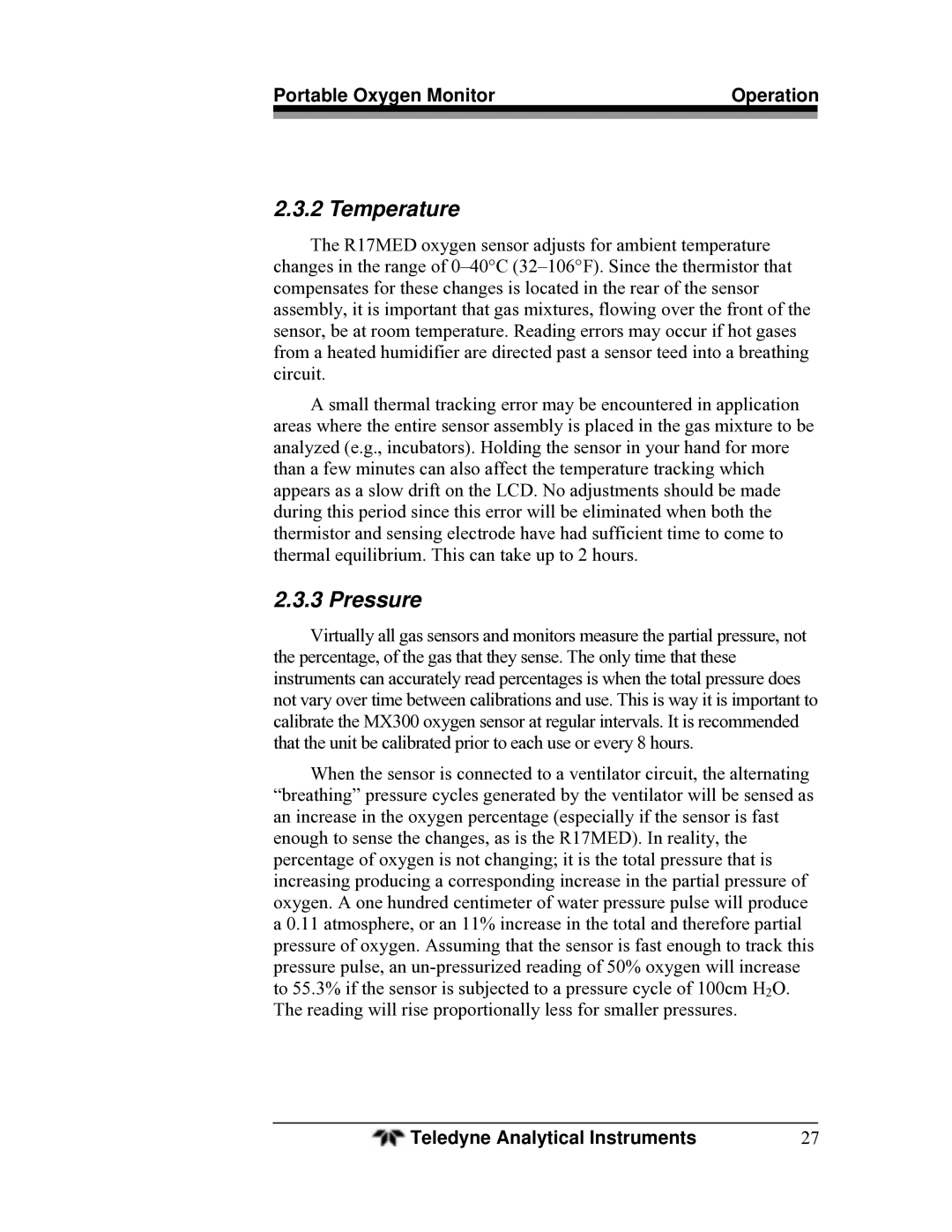Portable Oxygen Monitor | Operation | |
|
|
|
2.3.2 Temperature
The R17MED oxygen sensor adjusts for ambient temperature changes in the range of
A small thermal tracking error may be encountered in application areas where the entire sensor assembly is placed in the gas mixture to be analyzed (e.g., incubators). Holding the sensor in your hand for more than a few minutes can also affect the temperature tracking which appears as a slow drift on the LCD. No adjustments should be made during this period since this error will be eliminated when both the thermistor and sensing electrode have had sufficient time to come to thermal equilibrium. This can take up to 2 hours.
2.3.3 Pressure
Virtually all gas sensors and monitors measure the partial pressure, not the percentage, of the gas that they sense. The only time that these instruments can accurately read percentages is when the total pressure does not vary over time between calibrations and use. This is way it is important to calibrate the MX300 oxygen sensor at regular intervals. It is recommended that the unit be calibrated prior to each use or every 8 hours.
When the sensor is connected to a ventilator circuit, the alternating “breathing” pressure cycles generated by the ventilator will be sensed as an increase in the oxygen percentage (especially if the sensor is fast enough to sense the changes, as is the R17MED). In reality, the percentage of oxygen is not changing; it is the total pressure that is increasing producing a corresponding increase in the partial pressure of oxygen. A one hundred centimeter of water pressure pulse will produce a 0.11 atmosphere, or an 11% increase in the total and therefore partial pressure of oxygen. Assuming that the sensor is fast enough to track this pressure pulse, an
Teledyne Analytical Instruments | 27 |
